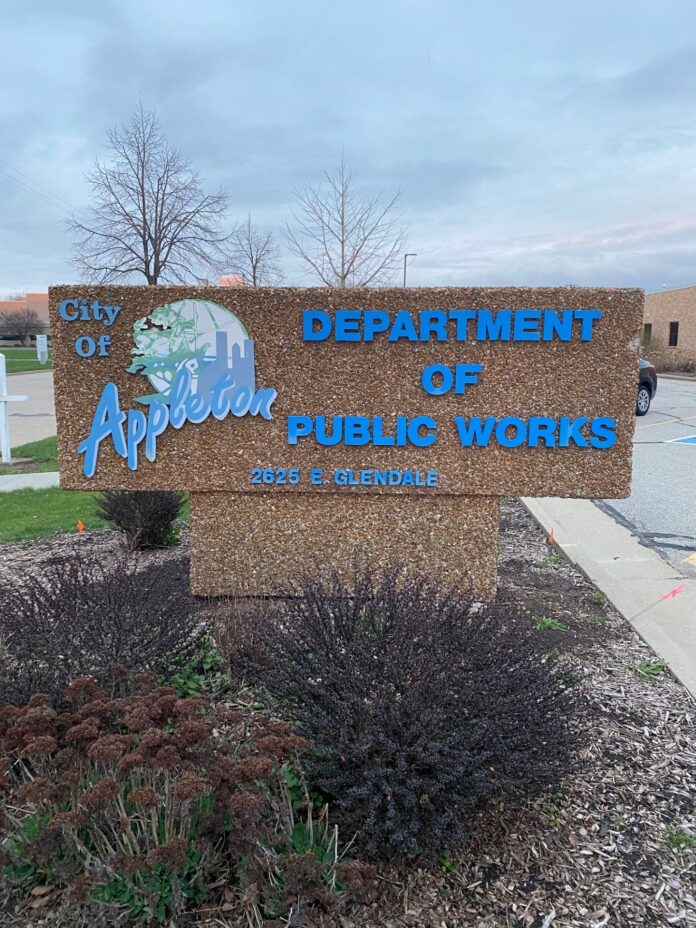Department of Public Works (DPW) Operations
Session 6 of the 2024 Citizens Academy was held on April 18 at the Appleton Municipal Services Building on East Glendale Avenue.
It’s impossible to write an all-inclusive article outlining the responsibilities of Appleton’s Department of Public Works, described by Deputy Director Nate Roper as a “small construction company.” The Department peaks at 120 employees during the summer months, then drops to 100. All employees are cross-trained and assigned to differing divisions as needs change throughout the year. Supportive administration will write in excess of 4,000 purchase orders in support of the staggering list of responsibilities. We toured three divisions.
City Traffic Engineer Eric Laum guided us through the sign shop, where they maintain and place 20,000 signs a year (most of which they design and make) on 360 miles of city streets, sidewalks, and trails. Signage cost varies from around $100 to over $25,000 for an over-the-road traffic signal. Two specially-equipped trucks are dispatched for installing new signs and replacing those damaged or vandalized. Every city sign is mapped with regular schedules for end of life-span replacement, which varies dependent on colors and required reflectivity. This division places and maintains the city’s overhead traffic camera system. Employees happily shared they will be switching over to a digital production system, shortening hours and improving efficiency.
Forestry: Every tree and stump on city property is mapped and maintained. Appleton’s 35,000 trees include 50+ varieties reflected in 30,556 located along streets and 4,604 in parks. The shop uses three bucket trucks to complete needed pruning, including branch removal and replacement of about 700 trees a year. Forestry also maintains the 50 stormwater ponds.
Street Division: Maintains over 350 miles of roadway, 20,000 manholes, 28,000 sewer grates, 60 snow plow routes (covering 800 lane miles), 35,000 cubic feet of street sweeping, 34,000 fire hydrants, and 380 miles of water mains.
Sanitation trucks remove over 40 million tons of garbage a year and conduct special pick-ups of Christmas trees and large items. Several weeks of leaf removal are scheduled each fall.
Snow plows start with the first quarter-inch of snow accumulation and continue with drivers working a 12-hours on, 12-hours off rotation until streets are clear. Appleton budgets $1.8 million for snow removal and $320,000 a year for salt, storing 6,500 tons of salt in its 8,000 tons-capacity salt building. No salt is used on the side streets, with most applied directly at intersections or in the form of brine sprayed on before snow events.
The equipment shop maintains over 10,000 pieces of equipment with 400+ valued over $10,000 each. For example, the Appleton Police Department operates about 85 vehicles. It takes over 40 hours to set up a new squad car.
Personnel are cross-trained to operate several vehicles, with each vehicle being multi-purposed. An example would be a truck that can be set up to plow snow, haul dirt, vacuum leaves, spread salt or brine, and pull stump and branch grinders — all driven by cross-trained operators. The equipment shop operates 24/7 responding to breakdowns, maintenance, as well as ensuring the vehicles are in compliance with current emission and safety standards. Each vehicle is computer-monitored in real time.
Merely the tip of the iceberg, this Glendale Municipal Services Building visit covered a sample of how Appleton DPW’s “small construction company” serves the community.


